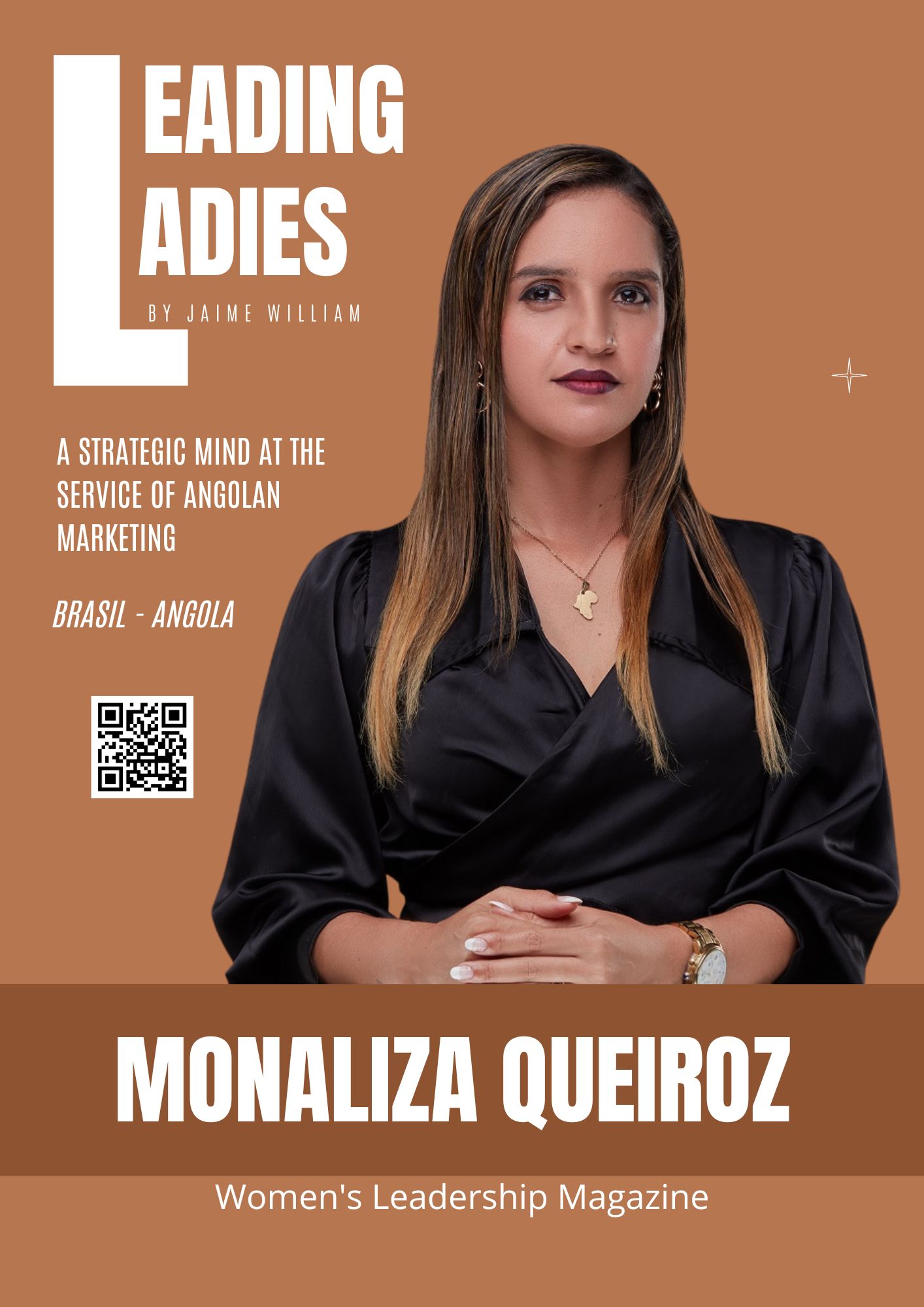
Unlocking Digital Marketing’s Secrets: Ana Elez Shares Wisdom from Slovenia
Welcome, Ana Elez, to our Women Leaders Magazine! We’re thrilled to feature your expertise in digital marketing, hailing from Slovenia. Your insights promise to enlighten and inspire our readers as they navigate the dynamic world of marketing in the digital age. Your accomplishments and innovative approaches serve as a beacon for aspiring professionals worldwide. We look forward to delving into your journey, strategies, and vision for the future. Your presence enriches our platform, empowering women in leadership roles globally. Thank you for sharing your invaluable insights with us. Welcome aboard!

1.- Ana, in a world where personal branding is becoming increasingly important, what strategies do you recommend for individuals looking to establish a strong online presence?
We live in a digital age so I feel like utilizing social media platforms which are a powerful tool for building an online presence would be my number one recommendation. Choosing the right social media platform is also rather important. Developing a content strategy with a mix of blogs, photos, povs. Content that will resonate with your targeted audience. Speaking about audience, engaging with them is super important as well. Respond to comments and messages, ask for feedback, and actively engage with your followers to create a sense of community.
2.- Can you share a memorable success story where personal branding played a pivotal role in someone’s career or business growth?
I could say quite a few but as of right now the one that is on top of my head is Oprah Winfrey. She dedicated her personal brand into helping herself and people be more positive, driven, and change the world for the better.
3.- With corporate branding, consistency is key. How do you maintain brand consistency across various digital platforms and channels?
Here are some tips I try to use to maintain the consistency. Firstly I would recommend creating guidelines that outline your brand’s visual identity, voice and tone, messaging, colour palette, typography, logo usage, and other key elements. Select right people to work with and train them. Be patient and encourage them as well. Ensure that all departments within your organization are aligned on your brand guidelines and messaging. Develop a content calendar to plan and schedule your digital marketing efforts across different platforms. This will help you maintain a consistent posting schedule and ensure that your messaging aligns with your brand guidelines. This has proven to work in my case, setting up a posting calendar made me more in control and more productive.
Regularly review your digital platforms and channels to ensure that they are aligned with your brand guidelines. Look for inconsistencies in design, messaging, and tone, and make necessary adjustments to maintain brand consistency. Monitor the performance of your digital marketing efforts and solicit feedback from customers and stakeholders. Use this feedback to make improvements.
4.- What are some common pitfalls companies face when trying to establish or revamp their corporate branding online, and how can they overcome them?
One of the biggest pitfalls in my opinion is not having a clear strategy in place before embarking on a branding initiative. Secondly, inconsistency in branding across different digital platforms can confuse customers and weaken the impact of a company’s messaging.
Another common pitfall is not listening to and incorporating customer feedback into the branding strategy.

5.- Social media algorithms are constantly evolving. How do you stay ahead of the curve in leveraging these platforms effectively for marketing purposes?
Tricks I learned about this topic are as follows. Regularly follow reputable sources to stay updated on changes to social media algorithms.
Test different types of content, posting times, and engagement strategies on social media to understand what works best for your brand. Use analytics tools provided by social media platforms to track the performance of your content and campaigns. Social media platforms are constantly introducing new features and tools to help users create and share content. Stay informed about these updates and experiment with new features such as live video, stories, and reels to keep your content fresh and engaging. Keep an eye on trends in your industry and monitor what your competitors are doing on social media.
6.- In your experience, what role does storytelling play in successful digital marketing campaigns, particularly on social media?
Story telling is an essence of every campaign if I do day so myself.
7.- Could you share an example of a digital marketing campaign that effectively utilized storytelling to connect with its audience?
I would say DRIVE TO SURVIVE, it is actually a Netflix show about what behind the scene of a formula one season. It has powerful visuals, lots of drama and gossip and it is telling a story. I feel like it introduced the sport to many fans around the globe.
8.- How do you see the intersection of marketing and artificial intelligence shaping the future of digital marketing strategies?
Overall, the integration of AI into digital marketing strategies is revolutionizing the way businesses engage with customers, optimize their campaigns, and drive growth. As AI technologies continue to advance and become more sophisticated, marketers will have even more tools and capabilities at their disposal to create impactful and personalized marketing experiences for consumers. By embracing AI and staying at the forefront of these trends, marketers can position themselves for success in the future of digital marketing.
9.- Are there any ethical considerations that marketers should be mindful of when incorporating AI into their campaigns?
I would say some examples of ethical considerations are data privacy and security, transparency, user consent and control. But also impact on society is very important. Marketers should strive to use AI in ways that benefit society as a whole and contribute to positive outcomes for all stakeholders.
10.- Ana, could you highlight some innovative AI-powered marketing tools or platforms that you believe will revolutionize the industry in the coming years?
“Natural Language Generation (NLG) Tools” These tools use AI to generate human-like text, enabling marketers to create personalized content at scale, such as product descriptions, email campaigns, and social media posts.
“Predictive Analytics Platforms” AI-driven predictive analytics platforms help marketers analyse data to predict future trends, customer behaviour, and optimal marketing strategies, allowing for more targeted and effective campaigns.
“Visual Search and Image Recognition” AI-powered visual search and image recognition tools enable users to search for products using images rather than text, enhancing the e-commerce experience and driving conversions.
“AI-Powered Content Curation Tools” These tools use AI algorithms to curate relevant content from across the web based on user preferences and behaviour, helping marketers deliver personalized content to their audience.
These are just some of the tools but in my opinion they have the potential to significantly enhance marketing effectiveness, efficiency, and personalization in the coming years.

11.- As the digital landscape becomes increasingly saturated, what advice do you have for businesses trying to cut through the noise and capture audience attention?
My main advice would be to create high-quality, valuable content that resonates with your target audience’s interests, challenges, and preferences. Content that educates, entertains, or inspires is more likely to stand out. Build trust with your audience by being authentic and transparent in your communication.
Be active on social media platforms where your audience spends time. Engage with your followers, respond to comments and messages promptly, and share user-generated content to foster community and loyalty. Continuously monitor your marketing efforts, track key metrics, and analyse performance data to identify what resonates with your audience and what doesn’t. Use this feedback to refine your strategies and tactics over time.
12.- Influencer marketing has gained significant traction in recent years. What are your thoughts on its effectiveness as a digital marketing strategy?
Collaborating with influencers can result in high-quality, authentic content that resonates with followers and aligns with the brand’s messaging and values. Influencers often have a dedicated and engaged following within a specific niche or industry. Partnering with the right influencers can help brands reach a larger audience and drive meaningful engagement with their target demographic. Audiences tend to trust recommendations from influencers they follow, viewing them as credible sources of information. When influencers genuinely endorse a product or service, it can help build trust and credibility for the brand.
However, it’s essential for brands to carefully while working with influencers to ensure they align with their values and target audience. Additionally, transparency and disclosure are crucial to maintain trust with consumers, so it’s important for influencers to disclose sponsored content appropriately.
13.- How do you identify the right influencers to collaborate with, ensuring alignment with your brand values and target audience?
Considering I do not own my personal brand yet, but hopefully I will in the near future, I prepared myself with the following tips. Start by clarifying your campaign objectives and identifying your target audience. Understand their demographics, interests, and preferences to ensure that the influencers you choose resonate with them. Look for influencers whose content style, values, and audience demographics align with your brand. Take the time to review the content posted by potential influencers. Look for quality, authenticity, and engagement levels such as likes, comments, and shares. Analyse the type of content they create and how their audience responds to it.
Consider whether the influencer’s personal brand and values align with your brand’s values and messaging. Research past collaborations the influencer has done with other brands.
Reach out to selected influencers with a personalized message expressing your interest in collaborating. Be transparent about your brand and ensure that the influencer understands your values and target audience.
14.- With the rise of video content, how do you approach video marketing to ensure maximum engagement and reach?
To maximize engagement and reach with video marketing, I focus on creating high-quality, valuable content that resonates with my target audience. Utilize storytelling techniques, keeping videos concise, optimize for mobile viewing, incorporate compelling visuals, and encourage interaction through comments, likes, and shares. Additionally, leverage multiple platforms, utilize SEO techniques for video discoverability, and analyse metrics to refine my strategy over time.
15.- Ana, in your opinion, what emerging trends in digital marketing are you most excited about, and why?
I feel like influencer marketing has such big impact on brands and audience as well. We often follow influencers and trust them to tell us their honest opinion about a brand, product or experience. I more often than not like to see review type of video to familiarize myself with the product I want to buy.
16.- Content marketing remains a cornerstone of digital strategy. How do you ensure content resonates with the target audience while also aligning with broader marketing goals?
To ensure content resonates with the target audience while aligning with broader marketing goals, start by thoroughly understanding your audience’s needs, preferences, and pain points. Develop buyer personas to guide content creation. Then, craft content that provides value, solves problems, or entertains your audience while staying consistent with your brand voice and messaging. Align each piece of content with specific marketing objectives, whether it’s increasing brand awareness, driving traffic, generating leads, or fostering customer loyalty. Regularly evaluate performance metrics to refine your content strategy and ensure it remains aligned with overarching marketing goals.
17.- Interactive content, such as quizzes and polls, is becoming increasingly popular. How can brands leverage this type of content effectively in their marketing efforts?
By leveraging interactive content effectively, brands can enhance engagement, build relationships with their audience, and drive meaningful results in their marketing efforts. Create interactive content that encourages active participation from the audience, such as quizzes, polls, surveys, and interactive infographics. This engagement helps to capture attention and keep users involved with the brand. Ensure that interactive content is relevant to your target audience’s interests, preferences, and pain points. Tailor the content to address specific needs or provide entertainment value.
Make your interactive content easy to share across social media platforms and other channels. Offer incentives such as discounts or exclusive content in exchange for contact information. Make the experience is seamless and intuitive for mobile users.
18.- Ana, could you share your insights on the role of user-generated content in building brand authenticity and trust?
User-generated content (UGC) plays a significant role in building brand authenticity and trust by showcasing real experiences and perspectives from customers. When consumers see authentic content created by their peers, it fosters trust in the brand and its products or services. UGC provides social proof, validating the brand’s claims and demonstrating its value to potential customers. Encourage UGC by creating opportunities for customers to share their experiences, such as through reviews, testimonials, social media challenges, or user-generated contests. Engage with UGC by reposting, sharing, and acknowledging user contributions, thereby strengthening the relationship between the brand and its community.
19.- As privacy concerns grow, particularly with the evolution of data protection regulations, how do you navigate the balance between personalization and privacy in digital marketing?
By prioritizing transparency, user consent, data security, and regulatory compliance, marketers such as myself, can navigate the delicate balance between personalization and privacy in digital marketing effectively.
20.- Finally, Ana, looking ahead, what do you believe will be the biggest challenges and opportunities for digital marketers in the next decade?
In my opinion by addressing challenges and capitalizing on the opportunities, digital marketers can adapt and thrive in the dynamic landscape of the next decade. Some challenges may be ad Blocking, Content Oversaturation, more strict Data Privacy Regulations. On the other hand some opportunities may be as such.
Advancements in AI and machine learning present opportunities for deeper personalization.
Innovation in content, Improved data analytics, E-commerce Growth, Sustainability and Purpose-Driven Marketing.
Interview with Ana Elez by Jaime William Mostacero Baca
Jaime William & Leading Ladies – Ana Elez



